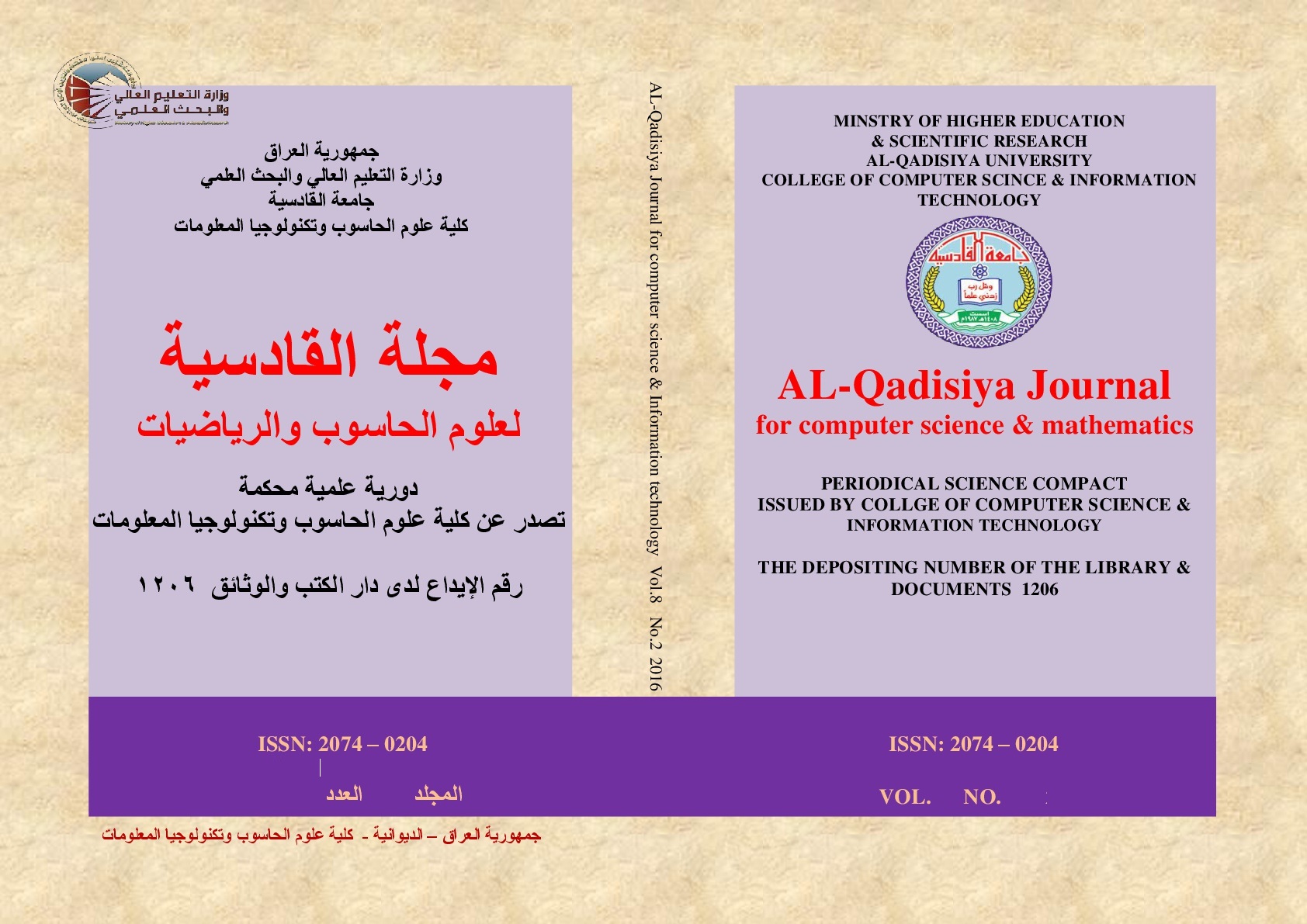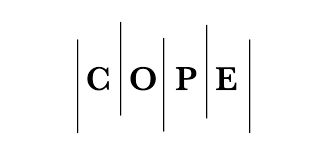Memory Organization for Image Segmentation Based on Region Growing
DOI:
https://doi.org/10.29304/jqcm.2022.14.1.880Keywords:
FIFO-stack, Image segmentation, Memory organization, Region growingAbstract
A solution is proposed for determining and organizing the size of the FIFO-stack in memory, required for load the coordinates of adjoining pixels in an image segmentation algorithm based on region growing. The FIFO-stack, organized on the idea of a ring multi-bit shift register, is considered, and the expression of memory calculations is performed through storing process in parallel registers. The conditions for maximum loading of the memory stack are formulated, for which an expression is obtained that allowing to accurately determining the required size of the FIFO-stack, which provides memory resources savings.
Downloads
References
[2] A. Simmons, S. R. Arridge, P. S. Tofts, and G. J. Barker, “Application of the extremum stack to neurological mri,” IEEE Transactions on medical imaging, vol. 17, (1998), pp. 371–382.
[3] R.L. Kruse, “Data Structures and Program Design in C++, ” New Jersey: Prentice-Hall, (2000), 717 p.
[4] S. Lipschutz and Schaum’s, “Outline of Theory and Problems of Data Structures, ” McGraw: Hill Book Company, 1986, 344 pp.
[5] M. Al-jawaherry and S. Hamid, “Image Compression Techniques: Literature Review”, JQCM, (2021), vol. 13, no. 4, pp. 10.
[6] N. Kaur, J. Singh and V. Sharma, “Analysis and comprehensive study: image segmentation techniques,” International Journal for Research in Applied Science & Engineering Technology, vol. 3, pp. 241–246, 2015.
[7] J. L. Moigne and J. C. Tilton, “Refining image segmentation by integration of edge and region data,” IEEE transactions on geoscience and remote sensing, vol. 33, № 3, pp. 605–614, 1995.
[8] O. Almiahi, and V. Kanapelka, “Progressive image segmentation based on the wave region growing,” Al-Sadeq International Conference on Multidisciplinary in IT and Communication Science and Applications, (2016), pp. 1-6.
[9] V. Dey, Y. Zhang, and M. Zhong, “A review on image segmentation techniques with remote sensing perspective,” IAPRS. Vienna. Austria, vol. XXXVIII, (2010), pp. 31–42.
[10] S. Hore, S. Chakraborty, S. Chatterjee, N. Dey, A. S. Ashour, L. V. Chung, G. Nguyen and D. Le, “An integrated interactive technique for image segmentation using stack based seeded region growing and thresholding,” International Journal of Electrical and Computer Engineering, (2016), pp. 1–8.
[11] S. Yuheng, Y. Hao, “Image segmentation algorithms overview,” ArXiv, pp. 1-6, 2017.
[12] Fasihi, M. Sadat, and W. B. Mikhael. “Overview of current biomedical image segmentation methods,” International Conference on Computational Science and Computational Intelligence (CSCI), (2016), pp. 803-808.
[13] S. Kamdi, R. K. Krishna, “Image Segmentation and Region Growing Algorithm,” International Journal of Computer Technology and Electronics Engineering, vol. 2, pp. 103–107, February 2012.
[14] H. M. Hammed, O. M. Almiahi and O. Shauchuk, “Detection of anthropogenic objects based on the spatial characteristics of their contour in aerial image,” Indonesian Journal of Electrical Engineering and Computer Science, (2021), pp. 206-215.
[15] Ku.Vasundhara, H. Lokhande, “Study of region base segmentation method,” International Journal of Advanced Research in Computer Science and Software Engineering, vol. 4, pp. 197–200, 2014.
[16] R. Brügger, C.F. Baumgartner, E. Konukoglu, “A Partially Reversible U-Net for Memory-Efficient Volumetric Image Segmentation,” Medical Image Computing and Computer Assisted Intervention, (2019), 48 p.
[17] A. Niemistö, T. Korpelainen, R. Saleem, O. Yli-Harja, J. Aitchison, and I. Shmulevich, “A k-means segmentation method for finding 2-d object areas based on 3-d image stacks obtained by confocal microscopy,” Proceedings of the 29th Annual International Conference of the IEEE EMBS, Lyon. France, pp. 5559–5562, August 2007.
[18] N. Wirth, Algorithms and Data Structures,” N. Wirth: Prentice Hall, (1985), 212 pp.
[19] S. Karmakar, M. Gogna, & F.C. Jain, “Application of quantum dot gate nonvolatile memory in image segmentation,” Signal, Image and Video Processing, (2016), pp.551–558.
[20] M. H. Hesamian, W. Jia, X. He and P. Kennedy, “Deep Learning Techniques for Medical Image Segmentation: Achievements and Challenges,” Journal of Digital Imaging, vol 32, (2019), pp. 582–596.
[21] T. Szirányi, J. Zerubia, L. Czúni, D. Geldreich, and Z. Kato, “Image Segmentation Using Markov Random Field Model in Fully Parallel Cellular Network Architectures, ” Real-Time Imaging, (2000), vol. 6, pp. 195-211.
[22] Ch. Wuyang, J. Ziyu, W.Zhangyang, Kexin Cui, and Q.Xiaoning, “Collaborative Global-Local Networks for Memory-Efficient Segmentation of Ultra-High Resolution Images,” Proceedings of the IEEE/CVF Conference on Computer Vision and Pattern Recognition, (2019), pp. 8924-8933.
[23] S. Vaze, W. Xie, and A. L. Namburete, “Low-Memory CNNs Enabling Real-Time Ultrasound Segmentation Towards Mobile Deployment,” IEEE Journal of Biomedical and Health Informatics, (2020), vol. 24, pp. 1059-1069.
[24] J. Sirotković, H. Dujmić and V. Papić, “K-means image segmentation on massively parallel GPU architecture,” Proceedings of the 35th International Convention MIPRO, (2012), pp. 489-494.
[25] A. Ali, M. RASHEED, S. SHIHAB, T. RASHID, A. Sabri, and S. Abed Hamed, “An Effective Color Image Detecting Method for Colorful and Physical Images”, Journal of Al-Qadisiyah for computer science and mathematics, (2021), pp. 88-98.













